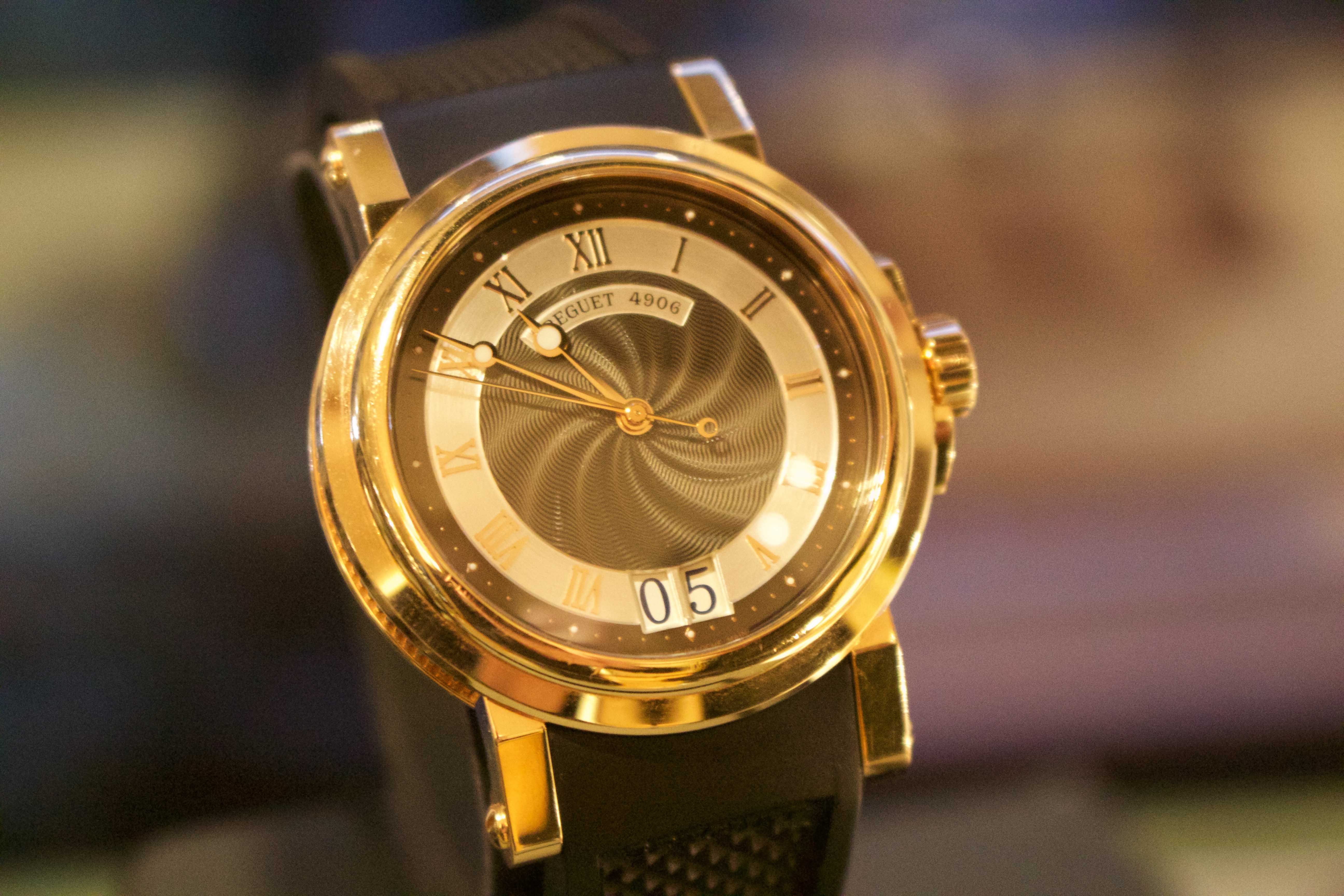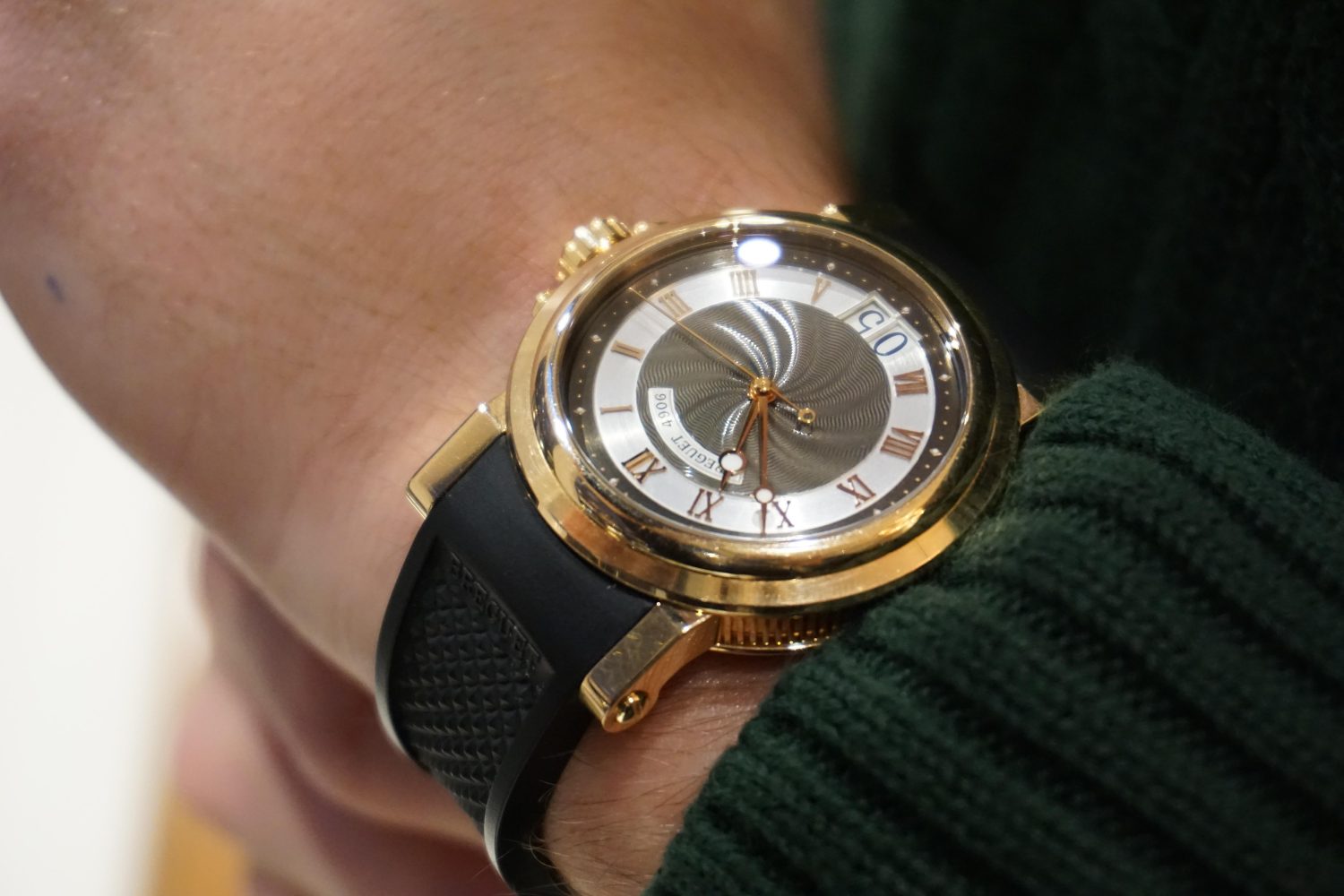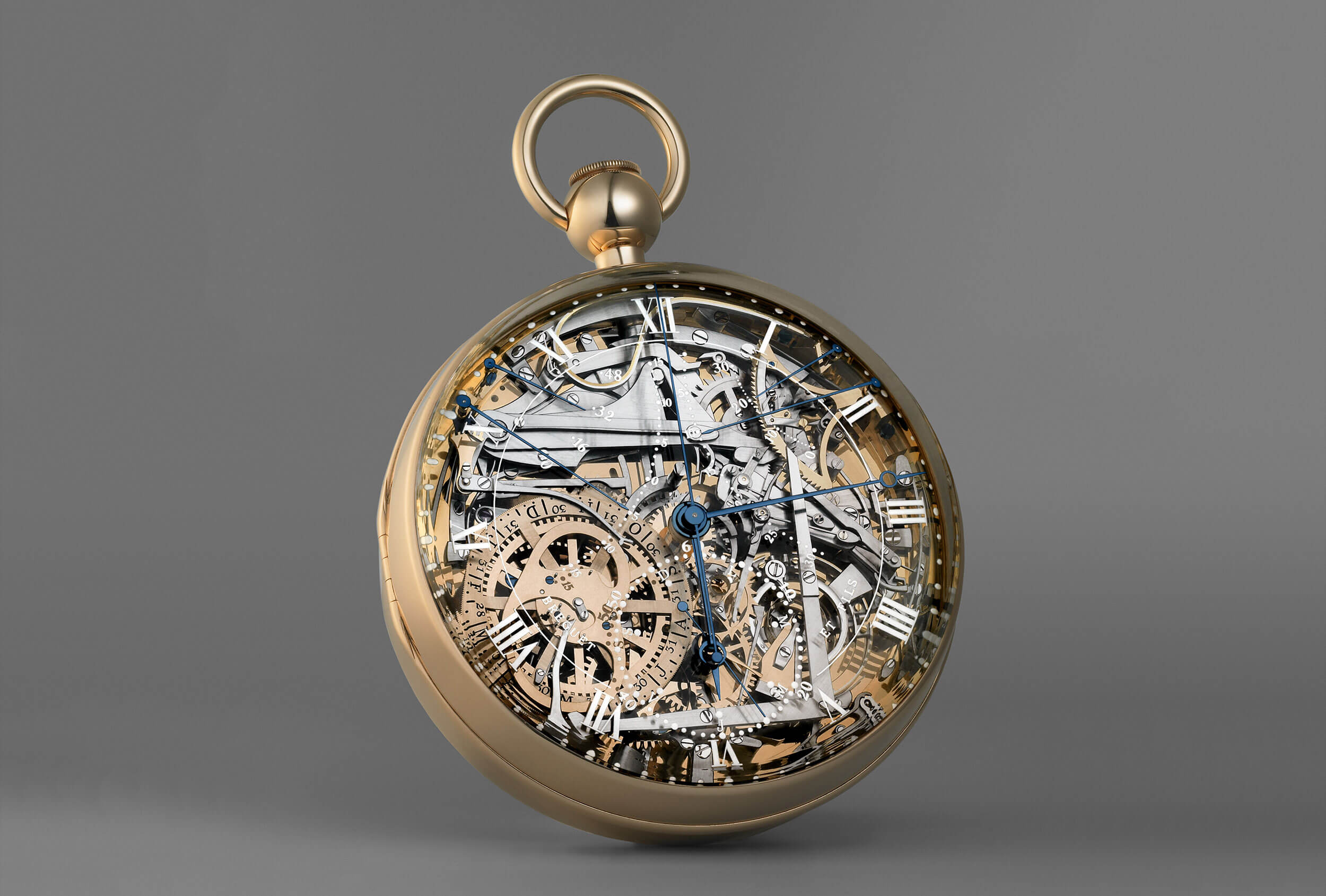
Top 21 Facts About Breguet – Interesting Things to Know
Breguet is one of the most prestigious and exclusive luxury watch brands today. The company has a long and rich history and is synonymous with innovation and fine watchmaking. Breguet is the ultimate choice for the watch connoisseur who recognizes the art of fine watchmaking and does not need a timepiece to show off. With their classic designs, Breguet watches are considerably more discreet than most other watch brands on the market but they are built with exceptional attention to detail and only produced in low numbers so those who know, they know.
Buying a Breguet timepiece is something that you do for your own enjoyment, not for anyone else’s or to show off. They’re the ultimate symbol of taste and appreciation for fine watches.
But because Breguet’s watches are produced in relatively low numbers and inaccessible to most people, Breguet’s long and interesting history is surprisingly unknown.
If you are curious to learn more about Breguet, its watches, and its interesting history, you have come to the right place. In this article, we look closer at some of the most interesting facts about Breguet.
Top interesting facts about Breguet
1. The tourbillon was invented by Breguet
This is probably the most well-known fact about Breguet.
Today, the tourbillon is one of the most exclusive, difficult, and expensive complications to make in a mechanical watch. They’re the ultimate testimony of a watch brand’s competence and of exceptional taste by the wearer.
Today, many different luxury watch brands incorporate the tourbillon complication in their timepieces but Abraham-Louis Breguet actually invented it. Considering the complexity of the tourbillon function, the fact that Breguet successfully managed to invent it goes to show the great expertise he had in watchmaking.
Abraham-Louis Breguet patented the invention in 1801.
2. Abraham-Louis Breguet made 35 tourbillon watches during his lifetime
Considering the complexity of the tourbillon function, making a tourbillon timepiece took a long time and was (and still is) extremely complex. Therefore, Abraham-Louis Breguet “only” made 35 tourbillon watches during his lifetime. Today, only 10 of those timepieces are known to have survived.
3. The name tourbillon comes from an arcane astronomical reference
So Abraham-Louis Breguet invented the tourbillon function but where does the name “tourbillon” actually come from, you may ask?
Well, because the purpose of the tourbillon is to counteract the effects of gravity, its name was inspired by astronomy.
Moreover, the name tourbillon also has french roots. In French, “tourbillon” can be translated as a whirlwind of violent rotation.
The vice president and head of the patrimony, Emmanuel Breguet, described the tourbillon name in the following way:
“But the word has another meaning, one almost forgotten today. In his Principia philosophiae of 1644, Descartes described the rotation of the planets around the sun, carried by the force of their tourbillon, by which he meant vortices. This definition, sitting at the interface between astronomy and philosophy, was echoed a century later by the mathematician and physicist Jean le Rond d’Alembert, who used the term to denote the rotation of a planetary system around a single axis. Astronomy is a domain of regularity and certainty, far removed from the vicissitudes and whims of meteorology; hence the analogy with horology, the science in which 18th-century philosophers liked to see the universe in microcosm.”
4. Winston Churchill used a Breguet timepiece
It perhaps doesn’t come as a surprise that a man like Winston Churchill used a Breguet timepiece. The watch was given to Churchill by his uncle and he used it for all of his life. Today, the watch remains in the family.
Occasionally, Winston would take the watch to Breguet in Paris to be cleaned and serviced and Breguet sent it back free of charge due to Churchill’s efforts.
5. Abraham-Louis Breguet’s name can be found on the Eiffel tower
When the Eiffel tower was built in Paris, Gustave Eiffel engraved the names of 72 French scientists, mathematicians, and engineers who had contributed to the construction of the tower. This was partially done to get them engaged in wanting the tower to remain as there were a lot of calls that the tower was to be deconstructed.
Breguet’s name can today be found engraved on the Northeast side of the tower.
6. Breguet is the first company to use guilloché for dials
Today, the guilloché pattern is synonymous with Breguet and can be found on many of its watches, both on dials and cases. It’s a signature trait of Breguet timepieces and part of that is because Abraham-Louis Breguet was the first to use this technique for its dials.
Breguet also frequently used the guilloché pattern for the cases of its watches but this was not only for visual purposes. The stunning decoration also helped prevent the watch from slipping out of a man’s fingers.
7. Abraham-Louis Breguet was saved from the guillotine
Living in France, things quickly got more dangerous for Abraham-Louis with the French revolution. In particular, considering the fact that he was close to the royals and aristocracy.
However, Breguet was a close friend of the revolutionary leader Jean-Paul Marat, whose sister actually made watch hands for Breguet.
Allegedly, Breguet had also saved Marat from a mob outside a house he was in. Breguet suggested the idea that he would dress up as an elderly woman to escape.
Abraham-Louis was set to be executed by the guillotine and when Marat discovered this, he helped Abraham-Louis to escape from Paris to Geneva in 1793.
Once in Geneva, Abraham-Louis moved to Le Locle and set up a small watchmaking workshop. He continued his operations until he could safely return to Paris.
8. Abraham-Louis Breguet opened up a branch in Russie which later had to close
Since Breguet had lots of clients from Russia, he opened up a branch in Saint Petersburg, Russia, in 1808. However, Breguet had to close the branch three years later as Tsar Alexander I banned French products in Russia due to Napoleon’s relationship with the country.
9. Breguet watches were regarded as the most reliable watches you could own
Due to the company’s exclusive and prestigious reputation, Breguet’s timepieces were extremely well-regarded. Abraham-Louis Breguet had built a reputation for himself in making extremely exclusive, luxurious, and accurate timepieces. Today, Breguet watches are still regarded as some of the most exclusive timepieces money can buy.

10. Napoleon Bonaparte was a Breguet customer and went to battle with a Breguet carriage clock
Napoleon Bonaparte was the general in the French army before he became the emperor of France. In 1789, Napoleon was going to Egypt and Syria to protect France. With him on his journey, he had a Breguet carriage clock, the first one that Breguet ever made, which he purchased just a few weeks before his journey. Napoleon purchased the clock at the Breguet boutique on 6 Place Vendôme in Paris and his purchase is still in the archive books of Breguet.
This striking clock had an eight-day movement and was made in gilt bronze. It was a quarter-repeating calendar clock that featured a moon phase. The clock was likely useful for Napoleon in timing his military efforts.
Today, the clock is on display in the Swiss National Museum.
Napoleon ordered a total of three repeater clocks but also purchased many other watches from Breguet for his personal collection. Some even state that Napoleon and Breguet were close friends.
11. Breguet developed its most complicated watch at the request of Marie-Antoinette
Known as the Marie-Antoinette pocket watch, this highly complicated watch was made by Abraham-Louis Breguet after Marie-Antoinette, the queen of France asked him to develop it. Marie-Antoinette asked Breguet in 1783 to make a pocket watch that included every possible complication at the time.
This was an extremely difficult feat that had never been done before but Breguet was up for the challenge. Due to the complexity of this timepiece, Breguet worked on it for forty years. The watch was completed in 1827 by Breguet’s son Antoine-Louis, four years after Abraham-Louis’s death, but there was just one catch. Marie-Antoinette had been beheaded 34 years earlier.
The pocket watch was called the Breguet No.160 but it has today become known as the Marie-Antoinette watch.
It is a self-winding gold pocket watch that, with its complications is a grand complication that is extremely complex. The watch features a minute repeater, a perpetual calendar, power reserve indicator, metallic thermometer, an independent seconds hand, a small sweeps second hand, equation of time, a lever escapement, a Breguet overcoil, and double pare-chute shockproofing.
The watch remained the world’s most complicated watch in the world for almost 100 years and whilst there have been more complicated timepieces manufactured since then, it is still considered a true piece of art and the epitome of fine watchmaking.
12. The Marie-Antoinette pocket watch was stolen in Jerusalem – but later returned
This historically important timepiece was acquired by the L.A. Mayer Memorial Institute for Islamic Art in Jerusalem in 1974. In April 1983, the watch was stolen and it was nowhere to be found for decades.
Nicolas G. Hayek, the owner of Breguet from 1999, also known as one of the masterminds behind Swatch, decided to make a replica of this historically important timepiece. The watch was made in 2005 and is now on display in the Legion of Honor exhibition.
Interestingly enough, the original, stolen watch would soon thereafter resurface.
In 2007, the Marie-Antoinette watch resurfaced following the death of the thief who had stolen it. A man named Naaman Diller, one of the most famous criminals in Israel, told his wife about the watch on his deathbed. His wife then made sure that the stolen watch was returned.

13. Abraham-Louis Breguet created the world’s first wristwatch for the queen of Naples
In 1810, Abraham-Louis Breguet created the world’s first wristwatch for Caroline Murat, the queen of Naples.
Breguet created an oval wristwatch with an ultra-thin design. The watch was equipped with a thermometer and became the world’s first watch to be worn on the wrist. Breguet made the watch with a bracelet that consisted of hair that was combined with gold thread. The queen of Naples received the watch in 1812 and in order to make this creation possible, a total of seventeen people worked on the watch.
Today, Breguet still makes the Reine de Naples model that is inspired by the watch that Breguet made for the queen.
14. The King and Queen of Naples was one of the best clients of Breguet
In total, the King and queen of Naples purchased a total of 34 clocks and watches between 1808 and 1814.
15. The wife of Napoleon Bonaparte was also a client of Breguet
It’s well-known that Napoleon Bonaparte was a good client of Breguet who purchased many watches. But Napoleon’s first wife and the first empress of France, Joséphine, was also a good client of Breguet.
Joséphine Bonaparte purchased a touch watch shortly after Napoleon purchased a watch for himself. She purchased it at the Breguet boutique on 6 Place Vendôme. She purchased a so-called “touch watch”, or “tact watch” whose benefit was that it enabled the user to read the time with the hands which makes for more discreet timekeeping. The touch watch was yet another clever invention from Breguet which had an arrow as a hand and markers on the outside of the case. The watch had a portrait of Napoleon on it but it eventually wore off and disappeared over time.
The name tact is french and has a similar meaning as “tactful” due to the fact that it was exactly what it allowed the owner to be whilst they used it.
16. Abraham-Louis Breguet made a tourbillon watch sold to Don Antonio de Bourbon, the Infante of Spain
The watch was sold to Don Antonio de Bourbon, the Infante of Spain, in 1808 and is known as the No. 1188 pocket watch. The watch is in Breguet’s ownership and was on display at Breguet’s Zurich boutique.
17. The son of Abraham-Louis Breguet developed helicopters and airplanes
Abraham-Louis Breguet was a true engineering genius who understood science and other important subjects. It also seems that his brains were passed on to the next generation, his son.
Together with Professor Charles Richet, Breguet’s son Louis Breguet developed the Gyroplane No. 1 in 1907. The gyroplane was manufactured in Breguet’s aviation factory in Douai, France.
The gyroplane was equipped with four rotors measuring 8 meters in diameter and was powered by a 40-horsepower engine. The plane was first flown with a man on board on August 24, 1907.
The development of the Gyroplane No. 1 led to the creation of the first helicopter, which, in many ways, can be seen as the predecessor of the helicopter that we know today. The creation was called Laboratory Gyroplane. Unfortunately, it was destroyed in an air attack at Villacoublay in 1943.
Breguet and his brother Jacques created the Louis Breguet company in 1908 and started focusing more on aviation. They created a military-type biplane and in 1908, Henri Brégi took the world’s first long-distance flight in Morocco from Casablanca to Fez for a total flight time of 2 hours and 50 minutes. The plane was donated to the Musé des Arts et Métiers in 1912 where it still hangs from the roof.
18. Abraham-Louis Breguet produced a total of approximately 17,000 timepieces during his lifetime
It’s safe to say that Breguet became very successful after a few years, with a great reputable status of making some of the finest timepieces in the world. Naturally, Breguet also became very wealthy as a result of his great success.
19. Breguet sold a watch to Count Stanislas Potocki on Feb. 12, 1809
In February 1809, Breguet solid a tourbillon pocket watch in gold, the watch no. 1176 to Count Stanislas Potocki.
20. The company continued to innovate, even after Breguet’s death
Since the death of Breguet, and even in more recent times, the company has followed the founder’s vision of innovation and pushing boundaries. As a result, the ingenuity and creativity of the Breguet brand have remained strong and consistent over time. In fact, the company has registered more patents since 1999 until now than its founder.
21. Breguet restored Marie Antoinette’s Versailles escape in 2007 and 2008
On the estate of Marie Antoinette’s favorite estate, Le Petit Trianon, there was an oak tree that she loved. This tree was struck by a lightning bolt and was forced to be cut down.
During this time, the company was working on the Marie-Antoinette replica which had been stolen (as discussed earlier) but not yet been recovered. Employees of Breguet who read about the story of the fallen tree proposed to the owner of Breguet, Nicolas G. Hayek Sr. (also the founder of the Swatch Group) that they would use a piece of wood from that tree for the replica that they were creating.
Breguet contacted the Palace of Versailles who agreed to sell them a piece of wood. In that conversation, the head gardener also asked if Breguet could make a contribution to the restoration of the Petit Trianon. When the whole planned project was explained to Breguet, the company agreed to finance the whole restoration project of the estate.
In total, Breguet spent €7 million to restore the chateau. This included the restoration of some very historically important rooms such as Marie Antoinette’s music room, as well as the library, and bedroom, amongst others.




